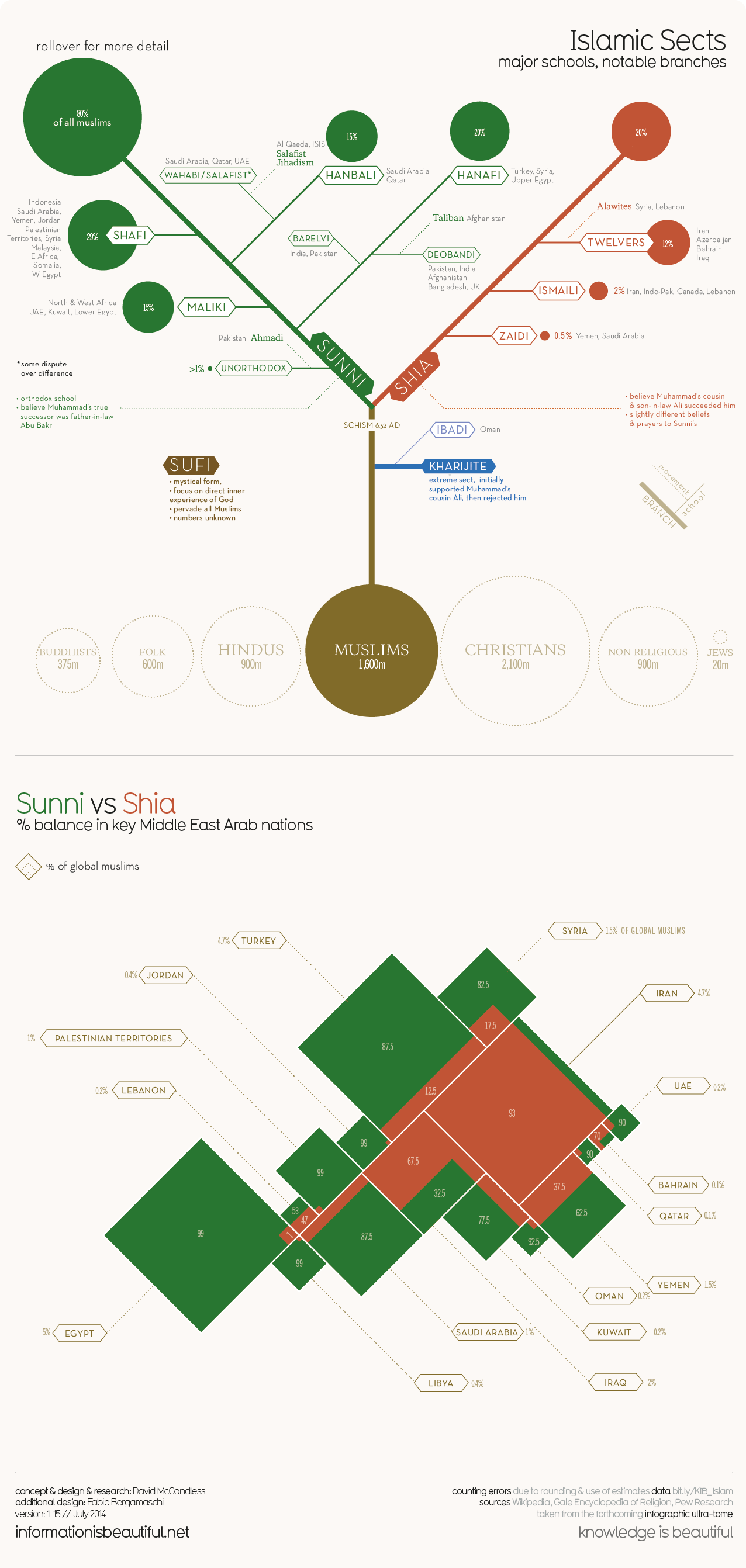Politics
A Visual Explanation of the Different Branches of Islam
September 18th 2014
By:
The chart below (created by Information Is Beautiful) is slightly over-simplified. For example, the author points out they used estimates and rounded data. Plus there is debate whether Shias comprise 20% of all Muslims or if the number is lower, closer to 10%. But given how difficult it is to record accurate data for 1.6 billion people (some of whom reside in countries that don't have strong census collection), this is nevertheless a helpful visualization for how Islam has evolved and branched out over its history.
A few items worth highlighting:
- Sunni Muslims greatly outnumber Shia Muslims. The conflict (and the split) between Sunni and Shia Muslims began as a debate over Muhammad's rightful heir.
- Further complicating matters, there is intra-Sunni fighting as well as intra-Shia fighting. For example, King Abdullah of Saudi Arabia, who is a Sunni Muslim, has expressed concerns about the rise of ISIS, who are a more extreme militant group of Salafist Sunni Muslims. At the same time, King Abdullah has funded other Sunni rebel groups in Syria who are rebelling against President Bashar al-Assad, an Alawite Shia Muslim.
- Much of the recent Arab Spring unrest began as a result of a country's leaders being from the population's minority branch of Islam. For example, Iraq is one of a few countries with a Shia majority (Iran and Bahrain are two others); however, Saddam Hussein, a Sunni Muslim, ruled for many years. Similarly, Syrian President Bashar al-Assad is an Alawite Muslim (a branch of Shia Islam), but Syria's population is majority Sunni.

